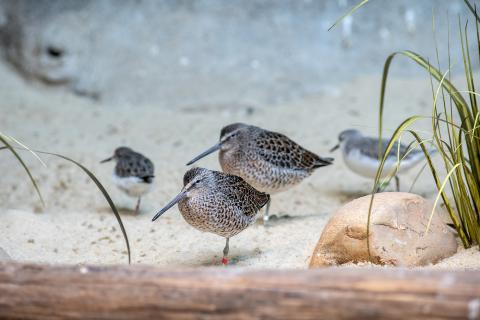Physical Description
Size
Native Habitat
Lifespan
The oldest recorded American wigeon lived for 21 years. They typically live for 2-3 years in the wild.
Communication
Food/Eating Habits
Wigeons eat mainly plants and other vegetation, either in or out of the water. While feeding in ponds, lakes and salt water, they nibble on aquatic plants like the upper parts of wigeon grass (named for them), duck sedge, duckweed and cattails.
Their short, sturdy bills help them pluck plants forcefully, allowing them to graze on land easier than other ducks do. They eat grasses and seeds.
In the breeding season, they eat more protein, including insects and small aquatic invertebrates like caddisflies, damselflies, midges, beetles, mollusks and crawdads.
Sleep Habits
Social Structure
Reproduction and Development
Conservation Efforts
Help this Species
- Organize or attend a stream, river, lake or other waterway cleanup in your area to preserve aquatic habitats for local species.
- Protect local waterways by using fewer pesticides when caring for your garden or lawn. Using fertilizers sparingly, keeping storm drains free of litter and picking up after your pet can also improve watershed health.
- Save water by switching to low-energy appliances, fixing leaks and turning off faucets when they aren't in use.
Animal News

Leaf-tailed Gecko Treated for Skin Cancer With Chemotherapy



